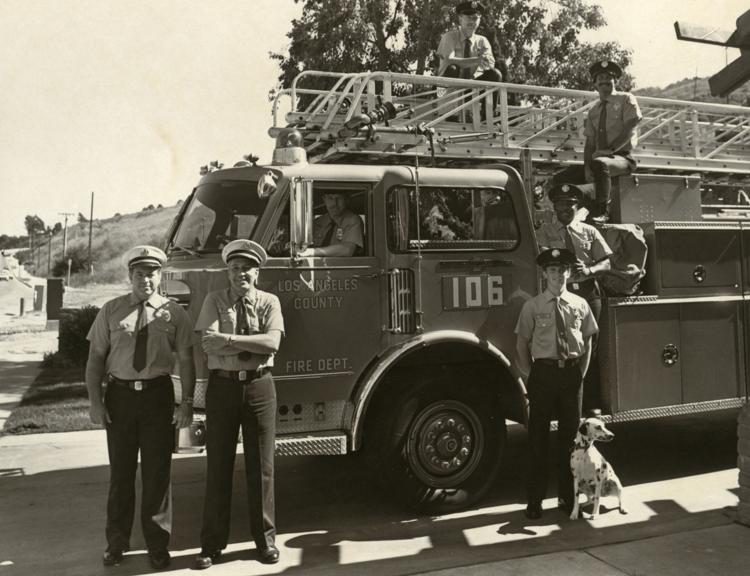
Dominguez Ranch and portions of the eastern side of the Peninsula.
Passengers on the now defunct Pacific Electric Railway “Red Cars” witnessed this “real live prairie fire.” Overgrown dry weeds ignited along the tracks and dense clouds of black smoke rose hundreds of feet into the air.
One of the largest local fires occurred 21 years later in October 1927. Ships far off shore witnessed a conflagration in which thousands of acres burned in the isolated Palos Verdes Hills. Fortunately, there was no damage to property as the area was largely still uninhabited and officials allowed the fire to burn out.
In 1939, a recklessly thrown cigarette burned several thousand acres near Palos Verdes Estates. It took 150 county firefighters and volunteers seven hours to extinguish it. Fanned by sea breezes, the fire came within five miles of the residential area now known as Rolling Hills.
Six years later in 1945, more than a 1000 people, including volunteers and 200 soldiers from nearby Fort MacArthur, battled a “roaring grass and brush fire” that caused the evacuation of 80 homes near what is now Rolling Hills. The blaze was fueled again by ocean breezes, and at one point came within three-quarters of a mile of Chadwick School.
In 1946, fueled by dry underbrush, a fire threatened homes in Miraleste, then still part of the unincorporated area of Los Angeles County.
County officials advised locals they were not in a fire protected district and refused to come, so more than 200 residents used garden hoses and wet sacks to contain the fire.
“Numerous ornamental pine trees lining roadways,” The Los Angeles Times reported, “burst into huge flaming torches.”
Population growth, climate change and drought have exacerbated the danger from fire so that fire-season is now year round.
Current state law provides limited tools to help reduce the risk for vulnerable communities. New homes must use “fire-adapted materials,” but there is no provision for existing homes so fire prevention will continue to fall largely on localities.
The Los Angeles County Fire Department requires homeowners to create zones of “defensible space” or buffers between their structures and the plants, brush and trees that could go ablaze.
The City of Rolling Hills recognized and responded early on to the need to mitigate the danger of fires on the Peninsula.
In 1979, when a fire destroyed 11 homes, the city adopted measures mandating fireproof roofing materials since the wood shake roofs were part of the rapid progress of the destructive fire.
The City of Rancho Palos Verdes is the “most populated city in California to have 90% or more of its population living within a ‘very high fire hazard severity zone.”
The City and the Palos Verdes Peninsula Land Conservancy have responded creatively by using goats to graze on vegetation and engage in natural brush control and fire prevention in the area’s open spaces.
The history of fire on the Peninsula and responses are vivid reminders that communities must be ever vigilant to this never-ending threat.
For more information on fire prevention, read about the Ready, Set, Go! plan here or visit fire.lacounty.gov.
Monique Sugimoto and Dennis Piotrowski are Adult Services Librarians at the Palos Verdes Library District.
